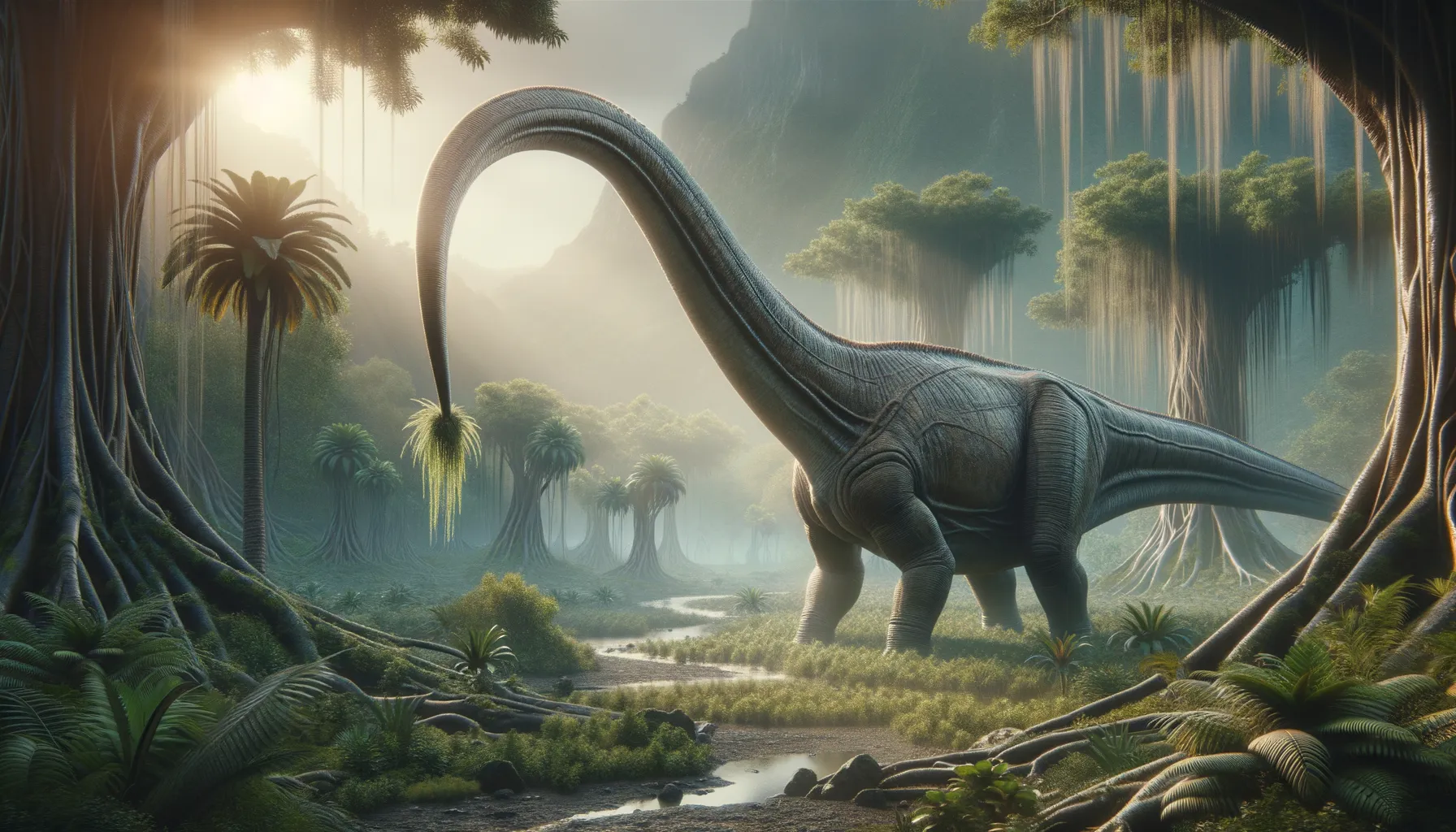
Yuanmousaurus
The gentle giant of Jurassic-era China.
Period
Jurassic
Length
About 15 meters (49 feet) long.
Height
Around 7 meters (23 feet) tall at the shoulder.
Weight
Approximately 20 tons.
Yuanmousaurus was a massive sauropod dinosaur from the Middle Jurassic period. It roamed the lush landscapes of what is now China, grazing on abundant vegetation with its long neck. As a member of the sauropod family, it was one of the largest creatures of its time, boasting an impressive size that protected it from most predators. Yuanmousaurus provides vital insights into the evolution and distribution of sauropods in Asia during the Jurassic era.
Diet
Yuanmousaurus was herbivorous, feeding primarily on high-growing vegetation such as conifers and ferns. Its long neck allowed it to reach foliage other dinosaurs couldn't access, maximizing its food intake within its habitat.
Hunting
As a herbivore, Yuanmousaurus did not hunt other animals. Instead, it foraged for plants, slowly moving through forests and open areas to find the most nutritious greenery.
Environmental challenges
Yuanmousaurus faced challenges such as climate fluctuations that affected plant growth, forcing it to migrate to find food. The competition with other herbivores also dictated its movement patterns and feeding strategies. Additionally, despite its size advantage, it had to be wary of predatory dinosaurs, particularly when it was young or sick.
Speed
Relatively slow due to its large size.
Lifespan
Estimated to be several decades, like most large sauropods.
First discovery
Discovered in 2000 in Yunnan Province, China.
Fun Facts
- Yuanmousaurus was a long-necked dinosaur that lived approximately 175 million years ago during the Middle Jurassic period.
- It was discovered in the Yuanmou County of Yunnan Province, China, which is how it got its name.
- Yuanmousaurus is believed to have been a herbivore, meaning it primarily ate plants.
- This dinosaur belonged to the sauropod family, known for their massive size and long necks.
- Although Yuanmousaurus was large, it was relatively small compared to other sauropods, estimated to be around 17 meters long.
- Fossils of Yuanmousaurus were first described in 2006, giving scientists new insights into the diversity of sauropods in Asia.
- The discovery of Yuanmousaurus helps paleontologists understand more about the distribution of dinosaurs in prehistoric times.
Growth and Development
Yuanmousaurus grew rapidly during its early years to reach a size that could deter predators. Its growth involved not just increasing in size but also developing strong legs to support its massive weight. As with many sauropods, it likely went through a prolonged juvenile phase before reaching full maturity.
Habitat
It thrived in environments ranging from dense forests to floodplains, where food was abundant. The availability of water sources was crucial, and its surroundings often included rivers or lakes that supported diverse plant life. Its habitat required a balance of open space for movement and dense vegetation for feeding.
Interaction with other species
Yuanmousaurus likely interacted with other herbivorous dinosaurs, often competing for resources. It may have formed herds for added protection against predators. While not aggressive, it could use its sheer size and tail as a defense mechanism when threatened.
Natural lifespan
Yuanmousaurus had a natural lifespan of several decades.
Reproduction
As with many dinosaurs, Yuanmousaurus likely laid eggs in nests, which were carefully hidden or guarded. Its reproductive strategy may have involved laying multiple eggs to ensure some survived to adulthood. Parental care, if any, was limited, as in most large dinosaur species.
Social behaviour
Yuanmousaurus may have been social, living in groups for protection and communal feeding. Its social structure, while not fully understood, could have been similar to that of modern-day elephants, with older individuals leading herds. Communication within the group likely involved vocalizations or body movements.
Fossil locations
Fossils of Yuanmousaurus have been found primarily in the Yunnan Province of China, providing evidence of its existence in that region during the Jurassic period. The discovery site was rich in other dinosaur remains, highlighting the area's abundance of prehistoric life.
